Harness vs collar debate for dogs has been ongoing for years. While some owners swear by the traditional dog collars, others opt for the harness. Both options have advantages and disadvantages, but ultimately, the decision should come down to what is best for your dog. In this article, we will explore the pros and cons of dog harnesses and dog collars to help you make an informed decision.
5 Pros Of Dog Harnesses
Choosing the appropriate gear for your furry friend can impact their well-being. Dog harnesses are an increasingly popular alternative. Here are some of the reasons why:
Harnesses Are Tough To Escape
Regarding safety, dog harnesses offer an added layer of protection. Dog collars can easily slip off or break, putting your dog at risk of getting lost or injured.
Harnesses provide a snug fit around the body, making it difficult for dogs, like French bulldogs, to wiggle their way out of them.
Harnesses Bring Fewer Health Risks
Choke collars, particularly those made of chains, can put too much pressure on your dog’s neck and throat, causing damage to their windpipe or even choking.
Harnesses distribute pressure across the chest, avoiding any pressure on the dog’s neck. So a harness is a safer option, especially for brachycephalic breeds.

Certain Varieties Cut Down On Pulling
If your dog is a puller, consider a no-pull dog harness that reduces the risk of injury to you and your dog. These harnesses have a front clip allowing you to lead the dog from the front so they face you instead of pulling away.
The back clip is also available in the market, which helps the dog to pull as much as they want while keeping them safe.
Better For Dogs With Back Pain And Back Issues
A dog’s harness can be better if long-bodied breeds have back issues. Choke collars or shock collars put pressure on the neck, leading to spinal injuries or exacerbating existing ones.
In contrast, harnesses distribute pressure evenly across the dog’s chest and back, minimizing the risk of further injury in a brachycephalic breed.

Prevents Dog From Slipping Out
Small dogs with smaller heads or those who are natural escape artists can quickly slip out of collars, putting them at risk of getting lost or injured. A dog harness prevents such accidents and make it more comfortable to walk your dog.
5 disadvantages of a dog harness
Dog harnesses are often touted as the safer and more comfortable option compared to collars for dogs. However, like any other product, they have potential downsides.
Achieving A Proper Fit Can Be Tough
One of the primary concerns with dog harnesses is that they can be challenging to fit correctly. Harnesses come in different sizes and styles, and choosing the wrong one can result in discomfort, chafing, and even injuries to your dog.
It’s essential to take accurate measurements of your dog’s body – chest, neck, and girth to find the proper harness that fits securely but not too tightly.
Back-Clip Harnesses May Encourage Pulling
Back-clip harnesses attach to a leash at the dog’s back, which can encourage pulling behaviors in some dogs. This design may not be suitable for pets that are not yet leash-trained, reactive, or aggressive towards other animals or people.
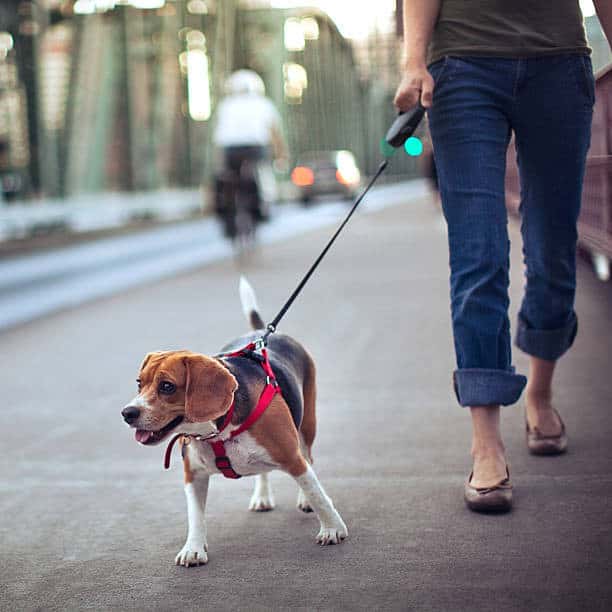
Pet Id Tags Are Tougher To Wear
Another downside of dog harnesses is that they can make it challenging for your pet to wear an ID tag. Dog’s ID tags are crucial for helping lost dogs find their way back home.
The dog harness can interfere with their visibility or readability. You may need to attach the pet’s ID tag or find a harness with an ID tag pocket.
Sometimes Harnesses Can Be Uncomfortable
While harnesses are generally more comfortable than collars, they can still cause discomfort or irritation, especially if worn for extended periods. Some dogs may be sensitive to the material or design of the harness, leading to skin irritation, chafing, or rubbing. It’s essential to choose a harness that is made of soft, breathable, and lightweight material.
Can Affect Your Dog’s Gait
Finally, some dogs may experience changes in their gait when wearing a harness, primarily if they are not used to it. A poorly fitting or improperly designed harness can cause restrictions in movement, muscle strain, or even skeletal problems. It’s crucial to monitor your dog’s behavior and gait when wearing a harness and adjust as needed.

5 Pros Of Collars
Collars have been used for centuries as a tool for dog owners to keep their pets safe and under control. Here are the five dog collars pros of your canine companion.
Easy To Remove And Put On, Helpful With Puppies
One of the pros of dog collars is that they are easy to remove and put on, making them a convenient pet accessory. They are handy for puppies who are still learning to follow commands.
Collars help to control and guide puppies, making them more manageable during walks and training sessions.
Less Intrusive
Unlike harnesses, collars are less intrusive and more comfortable for pets. They don’t cover much of your pet’s body, allowing them to move freely and comfortably.
Moreover, collars are lightweight and don’t cause any discomfort to pets, making them an ideal accessory for everyday use.
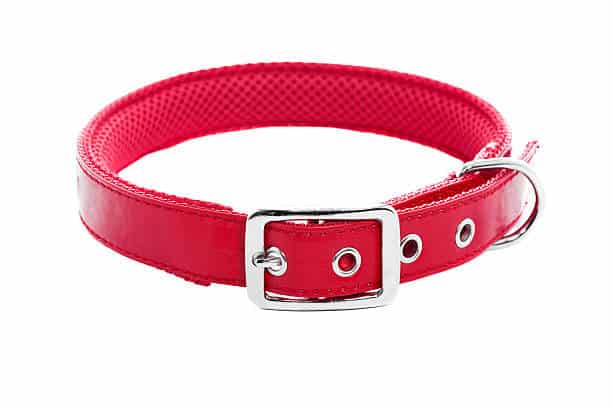
Many Styles & Options Are Available
Collars come in many different styles, colors, and materials. Select a collar that fits your dog’s personality and preferences, ranging from nylon to leather.
Moreover, there are customizable options available in the market, where you can personalize your pet’s collar with their name and phone number.
Holder For Id/Tags
Collars are an excellent way to keep your pet’s identification tags visible and secure. Identification tags are crucial for pets, providing information about the dog owner, address, and medical conditions. Collars offer a designated place to attach tags, making them easy to locate in case your pet gets lost.
Often Easier To Clean
Collars are often easier to clean than other pet accessories, such as harnesses. To clean the material, use a damp cloth or machine wash, depending on the type of fabric. Moreover, collars don’t trap dirt and debris like harnesses, making them a more hygienic option for pets.

5 Cons Of Collars
A dog collar also has its downsides. Here are some cons of dog collars:
Has Been Shown To Cause Pressure On The Eyes
One major con of dog collars is the pressure they put on a dog’s eyes. When dogs pull, the collar tightens around the neck, causing eye pressure. It can lead to eye injuries and is painful for the dog.
Can Cause Neck/Back Pain – No Distribution Of Pressure
Collars can also cause neck and back pain in dogs. The pressure on the neck can cause discomfort and pain, especially for dogs that pull frequently. The weight of the collar also causes a strain on the neck and back muscles, leading to stiffness and pain.
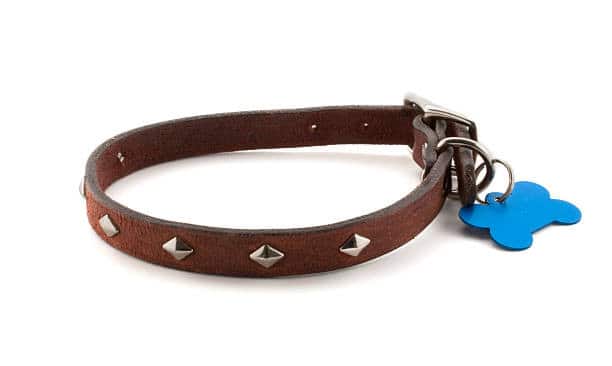
Dogs Can Easily Slip Out (Martingale Helps With This)
Another con of dog collars is that they can easily slip off. It is especially true for small dogs. Using a martingale collar can help prevent dogs from slipping out, but it’s not a guaranteed solution.
Can Be Dangerous If Caught On Things Which Can Lead To Choking
Dog collars can also be dangerous if they get caught on something. It can lead to choking, injury, or even death. Dogs can get caught on fences, branches, or furniture, causing severe harm.
More Leash Tangling, Especially With Puppies
Collars can cause more leash tangling, especially with puppies. As they learn to walk on leash attachments, puppies can become excited and move around a lot, causing the leash to tangle around their legs or body. It can be frustrating and dangerous for both the dog and the owner.

Types Of Dog Collars
Many types of collars are available, each with unique features and benefits. Here are three popular types of dog collars to consider:
Martingale Collar
Martingale collars also referred to as limited-slip collar, is a popular choice. It is famous for dogs who tend to slip out of their collars or have necks wider than their heads.
It has two loops – one large loop around the dog’s neck and a smaller loop connecting to the leash. When the dog pulls, the smaller loop tightens the collar, preventing the dog from slipping out. Martingale collars are an excellent training tool and can prevent dog neck damage.

Flat Buckle Collar
The most common type of dog collar is the flat buckle collar. It features a simple buckle that fastens around the dog’s neck and has a metal ring to attach the leash.
Flat collars come in various materials, such as nylon, leather, and neoprene, and are available in different sizes and colors.
Flat buckle collars are ideal for dogs who don’t pull excessively on the leash or have no breathing issues.
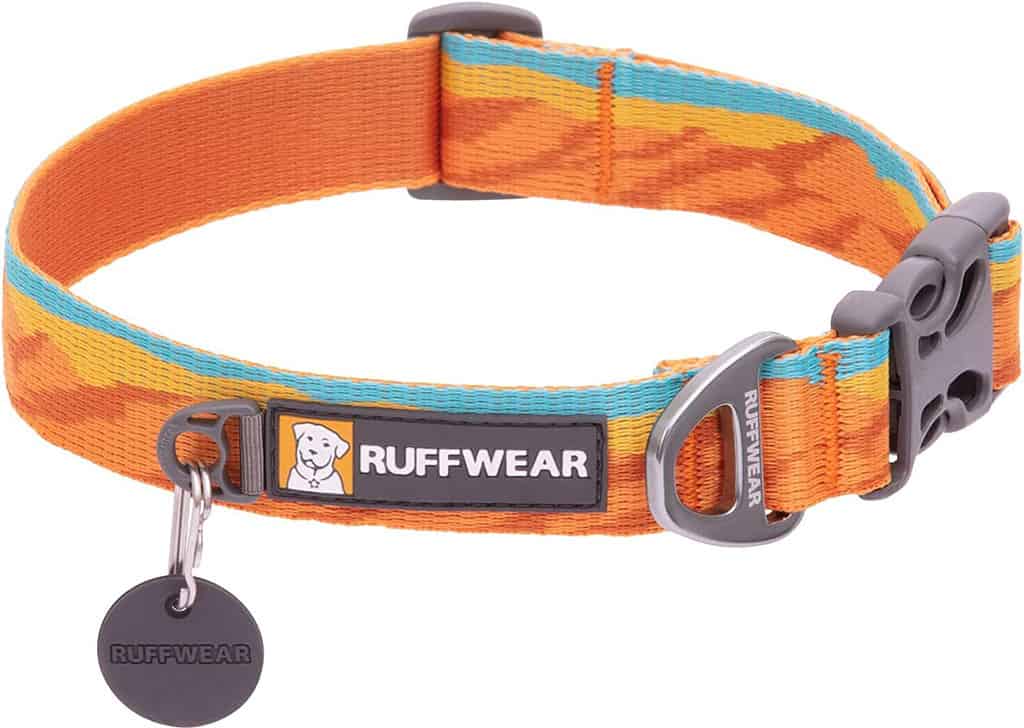
Rolled Collar
A rolled collar is an excellent choice for dogs with long hair or sensitive skin. Unlike flat collars, rolled collars are made from rolled leather, reducing the hair and dog’s skin caught in the collar.
Rolled collars are also less likely to cause friction burns or irritations on the dog’s skin. However, they are not ideal for those who pull, causing trouble breathing.
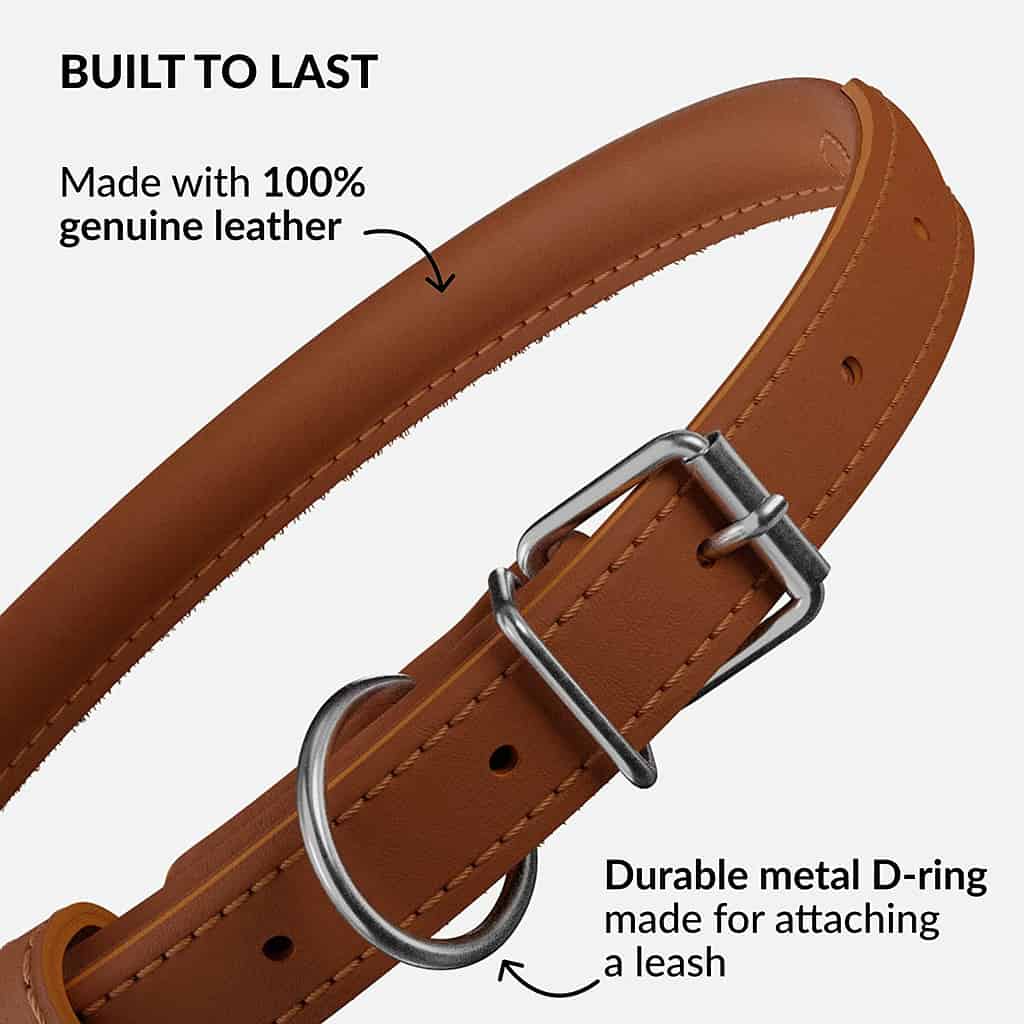
Types Of Dog Harnesses
Let us break down the three most popular types of dog harnesses and their benefits.
Front-Clip Harness
Front clip harnesses can be a great solution if your dog tends to pull during walks. It’s designed to discourage pulling by redirecting their attention and body.
These harnesses cover the front of the dog’s chest, which allows the owner to steer their pet in the right direction. Some benefits of front clip harnesses are:
- Reduces pulling and promotes better walking behavior
- Ideal for training and controlling strong dogs
- It can be used for short-snouted dog breeds
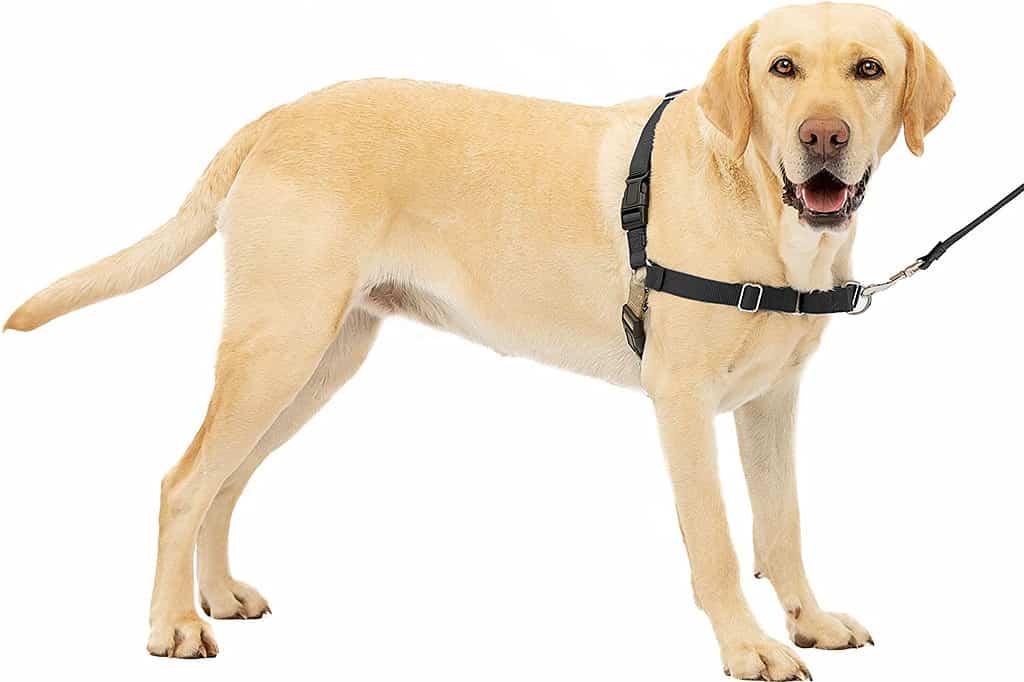
Back Clip Harness
A back-clip harness is perfect for smaller toy breeds who do not pull as much during walks. The leash attachment is on the back of the harness, which is comfortable for dogs who do not like pressure on their chest. Some benefits of a back-clip harness are:
- Provides comfort and support to toy breeds
- Reduces strain on the neck and spine
- Ideal for breeds with short hair
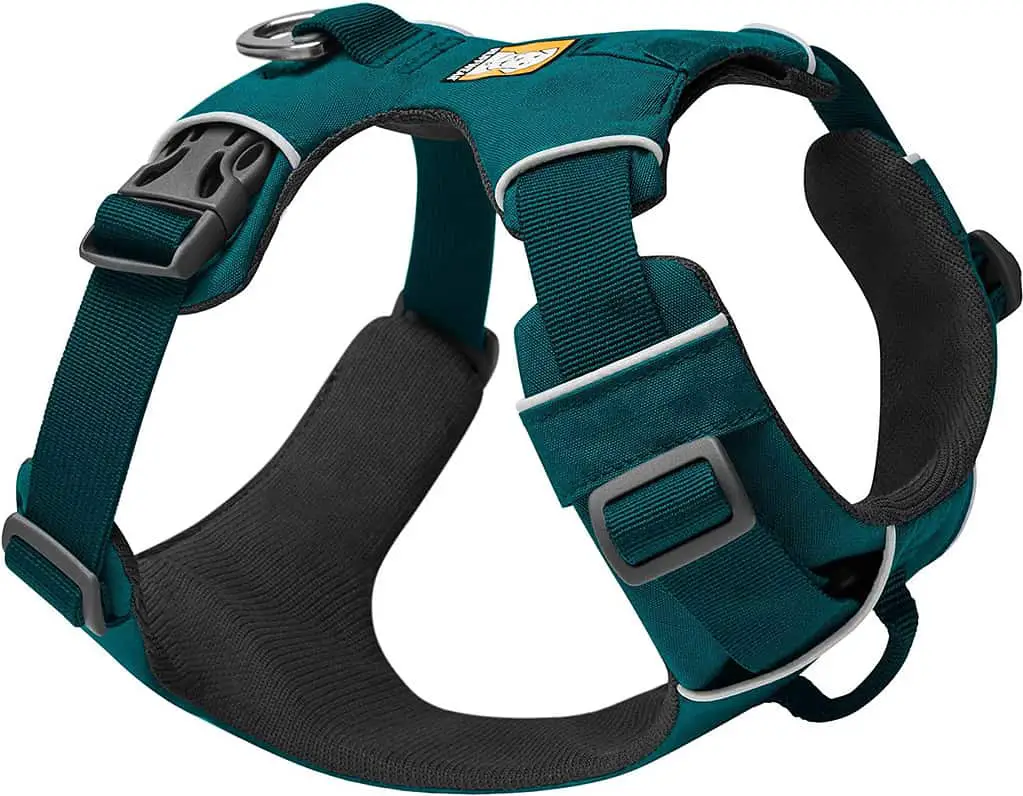
Step-In Harness
A step-in harness is easy to put on and ideal for a adult dog who doesn’t like anything going over its head. The harness is placed on the ground, and the dog steps into it. Some benefits of a step-in harness are:
- Easy to put on and take off
- Ideal for dogs with neck injuries or trachea problems
- Provides support to older dogs

5 Tips For Introducing Your Pet To A New Harness
Introducing a harness to a new dog can be daunting, especially if they are not used to wearing one. However, ensuring your pet is comfortable and safe while wearing harnesses is essential. Here are five tips for introducing your pet to a new harness.
Choose the Right Harness
The first step to introducing your pet to a harness is selecting the right one. Consider the size and breed of your pet and choose a harness that fits them well. Look for harnesses that are adjustable, comfortable, and have a secure fit. Avoid using harnesses that are too tight or too loose.
Start Slowly
Introduce the harness to your pet gradually. Leave the harness near your pet’s favorite spot for a few days. Then, place it on your pet’s back without fastening it. To help your pet associate the harness with positive experiences, give them treats and praise as a reward.
Get Your Pet Used to the Sensation
Before fastening the harness:
- Allow your pet some time to adjust to donning the gear.
- Place treats on the harness to encourage your pet to put its head through the opening.
- Gradually work up to fastening the harness and rewarding your pet for wearing it.
Practice in a Safe Environment
Practice leash training while walking dogs in a safe, enclosed environment. It will help your pet get used to the harness and leash without the added stress of distractions or dangers.
Be Patient
Introducing a new harness to your pet takes time and patience. Don’t rush the process; reward your pet for positive behavior. With patience and positive reinforcement, your pet will be comfortable and happy wearing its new harness in no time.
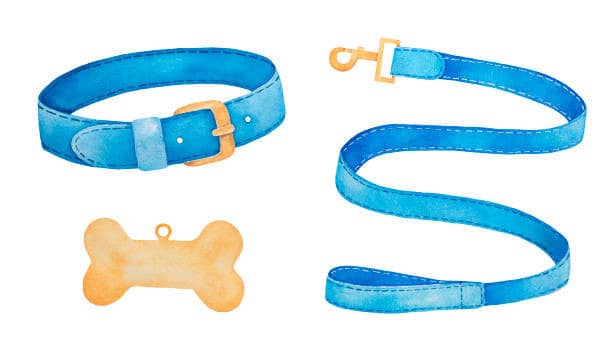
My Personal Experience & Setup For My Dogs
As a dog owner, I’ve tried both harnesses and collars for my furry companions. And let me tell you, after some careful consideration and personal experience, I’ve found that harnesses are the way to go.
I’ve got two medium-sized dogs – a Labrador and a Labrador mix – who love to pull and jump around during our walks. At first, I used collars for both of them, but I quickly realized that it was putting a lot of strain on their necks, especially during their energetic moments.
And when they were on a leash, they would pull so hard that it was difficult for me to control them, and it caused them to choke and cough.
That’s when I decided to switch things up and try using harnesses. And boy, was it a game-changer!
Harnesses are designed to distribute the pulling force throughout the dog’s body, reducing the pressure on their necks and making it much easier to control them. Plus, it reduces the risk of injury and discomfort.
Right now, I’ve got a front-clip harness for my Labrador Retriever and a back-clip harness for my Labrador mix. The front-clip harness works best for my Lab because it discourages her from pulling too much.
Overall, I’m really happy with my decision to switch to harnesses, and I think my dogs are too!

When A Harness Is Better Than A Collar
A harness is the best choice for dogs that pull or have respiratory problems. It evenly distributes pressure, reducing neck strain. Here are some situations where I prefer using a harness:
- During walks in a dog park, especially if your dog pulls or lunges toward other dogs or people.
- For breeds with short muzzles, such as pugs or bulldogs, who are prone to respiratory issues.
- A harness can protect your dog from being thrown forward during sudden stops while traveling in a car.
Martingale Dog Collar Versus Harness: Which Offers More Control?
While a good harness reduces strain on your dog’s body, a martingale or prong collar can provide more control in situations where your dog might slip out of their collar. Here are some cases where I prefer using a martingale collar:
- For working dogs who habitually slip out of their regular collar.
- Using prong collars while training your dog to walk on a leash can provide more control without harming its neck.
- During obedience training or agility classes, you need precise control over your dog’s movement.

Tips For Leash Walking With A Dog Harness Or Dog Collar
Why Do Some Dog Owners Choose Dog Collars Instead Of A Harness?
Dog collars are popular for many dog owners because they are easy to use and attach to a leash. They are also suitable for well-behaved dogs who do not pull on the leash.
Do Certain Breeds Do Better With Harnesses Or Collars?
Different breeds of dogs have different body shapes and sizes, which can affect which type of leash is best for them. For example, dogs with short snouts or necks may be better suited to harnesses because collars can pressure their windpipes.
Can A Dog Wear A Collar And A Harness?
Yes, some dogs wear both a collar and a body harness. A collar can hold identification tags, while a harness can provide more control and comfort during walks.
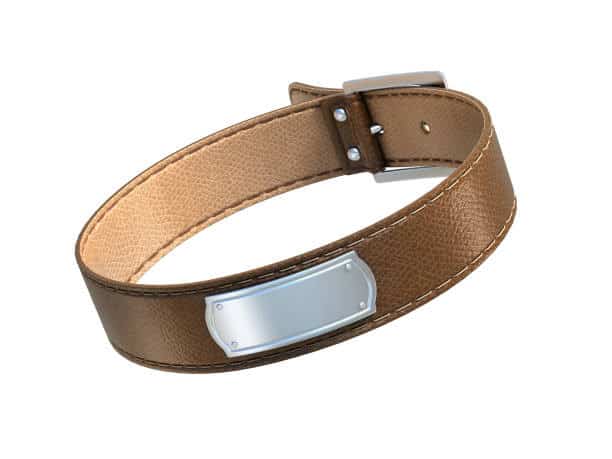
Do Harnesses Hurt Dogs?
A properly fitted body harness should not hurt a dog. A harness can be more comfortable and secure for dogs who pull on the leash.
Do Collars Hurt Dogs?
Collars can cause discomfort or neck injury if misused or if the wrong type of collar is used. Choosing the right size and type of collar for your dog and using it properly is essential.
Can A Dog Wear A Harness All The Time, 24/7?
It is not recommended always to leave a harness on a dog. Dogs need to be able to scratch and groom themselves, and wearing a harness constantly can cause skin irritation.
What Kind Of Lead Is Best For Leash Walking My Dog?
A standard six-foot leash made of nylon or leather is a good choice for most dogs. Retractable leashes can be dangerous and are not recommended for leash training.
Should I Consider My Dog’s Breed When Choosing Between A Harness And Collar?
It is essential to consider your dog’s breed when choosing between harnesses and collars. Some breeds may do better with a harness, while others may do better with a collar.
To ensure your dog’s comfort and safety during walks, selecting the appropriate harness or collar is crucial based on their breed, size, and behavior.

Dog Collars Vs Harnesses: FAQ
Are Harnesses Bad For Dogs?
No, harnesses are not bad for dogs. They can prevent neck injuries and provide better control.
is a harness better than a collar for a puppy?
A harness is better for large dogs because it distributes pressure evenly and prevents neck injuries.
is a dog harness better than a collar?
Yes, a harness is better for puppies as it prevents tracheal damage and is more secure.
Should My Dog Wear A Harness Or A Collar?
It depends on your dog’s needs. Harnesses provide better control, while collars are better for identification.
Do Dogs Like Harnesses Or Collars Better?
It varies by dog. Some prefer harnesses for comfort, while others prefer collars for familiarity.
Can I Leave A Harness On My Dog Instead Of Collar?
Leaving a harness on for extended periods may result in chafing and discomfort, so it’s not advisable.
Is A Harness Or Collar Better To Stop Pulling?
A harness is better to reduce pulling, providing better control without harming the dog’s head.
Why Not To Use A Dog Harness?
Using a poorly fitted or improper harness can cause pain, chafing, and restrict movement.
Do Dogs Pull Harder In A Harness?
No, dogs do not pull harder in a harness. Harnesses distribute pressure evenly, preventing excessive pulling.
Do Dogs Pull Less With A Harness?
Yes, dogs tend to pull less with a properly fitted harness as it provides better control and less discomfort.
What’s The Best Thing To Stop A Dog Pulling?
Walk dogs calmly using a no-pull harness, rewarding good behavior and keeping the leash loose.
What Is The Best Way To Stop Your Dog From Pulling?
A dog trainer will train your dog to walk calmly on a leash, use positive reinforcement, and avoid punishment.
Is A Harness The Same As A Collar?
Harnesses and collars serve different purposes, but a harness may be better for dogs that pull.
Will A Collar Stop My Dog Pulling?
A collar alone may not be enough to reduce pulling. Consider a no-pull harness.
Do Vets Recommend Collars Or Harnesses?
Vets may recommend collars or harnesses depending on the dog’s behavior.
Why Are Collars Better Than Harnesses?
Collars are not necessarily better than harnesses. It depends on the dog’s breed, size, and behavior.
What Leash Is Best For A Dog That Pulls?
Use a no-pull or front clip harness with a standard leash to prevent pulling and promote good behavior.
Is A Harness Or Collar Better For Puppy Training?
A harness is generally recommended for puppy training as it is gentler on their neck and spine.
Author Profile
- Site Owner And Planning Specialist
-
Aritra, the founder of Labradorandyou.com, is a lifelong dog lover whose passion ignited for Labradors for their loyalty and intelligence. With extensive research and personal experiences, Aritra has become a Labrador expert, offering a rich resource on the breed. Labradorandyou.com provides reliable, timely, and evidence-based information, including Labrador-specific product reviews, training techniques, and care tips.
Labradorandyou.com was born out of Aritra's passion and his desire to share his profound knowledge about the breed. The site serves as a comprehensive resource, offering a wealth of up-to-date information for Labrador owners and enthusiasts alike
Also by the author
 FAQNovember 17, 2023How To Adopt An Emotional Support Dog?
FAQNovember 17, 2023How To Adopt An Emotional Support Dog? Mix-BreedsNovember 16, 2023Red Labradoodle Ultimate Guide: Breed Facts, Care Tips
Mix-BreedsNovember 16, 2023Red Labradoodle Ultimate Guide: Breed Facts, Care Tips Top BreedersNovember 8, 2023Breeding Labradors: Everything You Need to Know
Top BreedersNovember 8, 2023Breeding Labradors: Everything You Need to Know FAQOctober 17, 2023Do Dogs Like Music? Researchers Say Yes! Find Out
FAQOctober 17, 2023Do Dogs Like Music? Researchers Say Yes! Find Out





